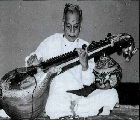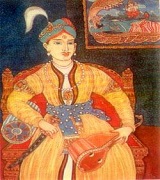Opinion Column

An important facet of the post-Independence Hindustani music has been the eclipse of vocal music by instrumental music in terms of popularity. The boom in instrumental music has brought to the forefront many instruments which were, until recently, not accepted on the mainstream concert platform. And performers of traditional instruments have attempted, with varying degrees of success, to develop new musical languages and idioms in order to cater to a new generation of audiences. Flute and sarangi players are now following the sitar anga (literally: limb; metaphorically: glimpse/ facet/idiom). The santoor vadak is playing a combination of sitar and tabla idioms. The sitarist is moving towards the gayaki anga (vocalism). Clearly, instrumental music is in a state of flux, and demands an assessment of its endeavours and the resultant tendencies.
Main Feature

Pichumani follows the vocal style in his veenaplay and adheres to traditional values. More than playing in concerts or for radio/tv and teaching, what he enjoys most, and what gives him the utmost satisfaction, is playing for himself with swanubhooti. It takes some time, he says, before he gets into the right frame of mind and becomes one with the music, as it were. There have been a few public performances in which he was able to achieve a similar feeling. One such performance was at Mantralaya, at the Brindavana of Sree Raghavcndra Swami in Andhra Pradesh. The scheduled mridanga vidwan could not make it and Pichumani had to play alone. Remarkably, some listeners approached him after the recital and asked who had accompanied him so well on the mridanga. He himself had, in fact, felt as though someone was playing the mridanga for him.
Special Feature

When we consider the contribution of Kerala to Carnatic music, the very first name that comes to our mind is Swati Tirunal. This is natural because of his rich output and its wide variety and high quality and also because of his unparalleled patronage to music. But there are several lesser luminaries who also deserve our attention and among them are composers, musicians, musicologists and partons of the art. Before we consider the development of Carnatic music in Kerala, it is worthwhile to note as a background to it the nature of the music prevalent there before its advent. There are some specialities noticeable in it.


